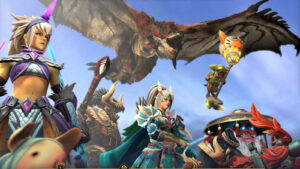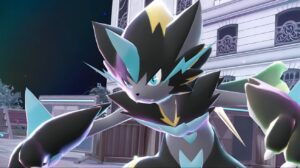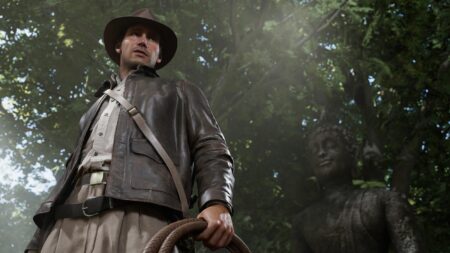“What to do with the time that is given to you?” This question stuck with me throughout my playthrough of Clair Obscur Expedition 33, the first game developed by Sandfall Interactive. I observed from a distance a world doomed to die a slow and painful death, yet there remain the embers of resistance taking multiple forms.
“Tomorrow comes.”
Clair Obscur: Expedition 33 is a turn-based RPG set in a mysterious world living under the threat of an omnipotent being called the Paintress. Every year, the Paintress wakes from her slumber and paints a number on the Monolith. Every human older than that number will vanish, never to be seen again. Over the years, the people of Lumiere have sent out expeditions in the hope of finally killing the Paintress. But after 67 years, none have come close to making a dent in her defenses. Will Expedition 33 finally finish the mission? Let’s find out.
Clair Obscur is ultimately a story of loss and resilience, of seizing victory from the jaws of defeat. It is said to be a complex and emotional story, and I couldn’t agree more. The questions the expeditioners ask weigh heavily on one’s soul. It’s something one needs to experience at least once in their gaming career. As such, there will be no spoilers here. Just know that what I’m allowed to talk about is but a fraction of what’s in store once you have bought the game.
First and foremost, let’s talk about the game’s unique take on turn-based combat. Clair Obscur’s combat is classified as turn-based real-time action, meaning the player is reactive on offense and defense. Timing is everything in this game, as failing a couple of skill checks will ultimately cost you the battle. This is particularly true when on defense, where you need to know when to dodge, parry, and jump through attacks. It is a source of great stress, waiting for the perfect moment to press the button. Later on in the game, we are introduced to a new timing move that further increases stress levels.
Fortunately, a game over in this game resets us back to a moment right before the fight. This allows us to avoid the fight or have another chance at redemption. Hopefully, after learning the enemy’s attack patterns. In any case, it is such a joy to watch the cinematic battles play out.
The expeditioners all possess a fighting style that’s unique to them. Gustave stores Charges as the fight progresses, only to release its full damage potential via Overcharge. Maelle shifts her battle stance after each attack. Knowing which one to change into is key to getting the most out of her. Lune, on the other hand, generates Elemental Stains after casting her skill. She can then consume that corresponding Stain to power up her next attack. With the right flow, she can output consistently high damage. And there’s the final member of the original team: Sciel. She generates and uses up a resource called Foretell. For her, it’s all about knowing when to stop generating and when to start harvesting.
There are other members in the team, but I’ll leave that for you to discover when the time is right.
The Continent is the primary setting of the expedition. Here we will find the remains of previous expeditions. These trailblazers made it possible for future expeditions to go further into the continent and closer to the Monolith, at the cost of everything. There is no better way of honoring their sacrifice than following the trail they left behind. Each location is more exotic than the last, full of enemies, each having their own combos you will need to learn to perfectly counter.
The Overworld contains various side locations like hidden dungeons and wandering merchants. If you want to know the full story of the previous expeditions, you might want to try and locate all 70+ log entries scattered around the continent. Dangerous as these places may be, the loot often makes the diversion worth it. Especially the cosmetic items.
Eventually, we are joined by our good friend, Esquie, who will gladly allow us to ride on his back, covering great distances over land and sea. As we push through the story, we unlock rocks that will allow Esquie to swim through corals and even one that will allow him to soar across the skies with the team on his back. This is something of an expectation in most JRPGs, and I’m glad that this is how we traverse the map.
As mentioned earlier, every location has its own set of monsters to deal with. Learning their specific moves is necessary if you want to keep your team healthy. Unless you’re making a punching bag build, something I’ll talk about in the next paragraph. Enemies in the late game are an absolute nightmare. They have long and unpredictable combos with quick, unavoidable follow-up attacks that give you no choice but to parry. In short bursts, these are amazing fights. But fighting in long stretches took a toll on my sanity.
The build flexibility in this game is awesome. You can create builds around specific skills or your current weapon. The amount of synergy is off the charts. The only drawback here is that it costs a lot to re-spec your characters, so you’ll have to choose your abilities wisely and hope that it all gels together in the way you want. My current favorite is the glass cannon build I made for Sciel. She already had impressive DPS, but this build allows her to cut through defenses like butter.
The absolute highlight of this game has got to be the marvelous voice work that’s gone into every single character in the game. Through voices makes clear where each character stands in the big picture. Gustave is supportive of the cause, yet he doesn’t know if it’s all worth dying for. Maelle is always looking over the horizon for a place where she belongs. Lune is willing to throw herself into her life’s work, hoping things will go according to plan. Sciel is forged through pain and loss, giving her a rare optimistic view of the world. All these things cannot be so clearly conveyed without the right person speaking them.
Better still, the game’s musical score is a range of emotions sung as an opera. In more personal moments, the music shifts to a piano solo that further emphasizes the gravitas of the moment.
It took me around 30 hours to finish the main story. I wish it were closer to 60 hours, but this game is already jam-packed with side content, so it might as well be 60 hours long. If that was the case, I would have wished the game took 100 hours to complete. With any hope, this might not be the last time we’ll see the city of Lumiere and its resilient people. There’s so much more about this world I wish to know.
On a final note, the pre-release build of the game runs buttery smooth on my mid-range PC. There is no stuttering and roughness present in the release version, unlike the preview build.
Clair Obscur: Expedition 33 is a rare triumph for such a small studio. The devs at Sandfall Interactive aimed for the stars, and they delivered a game that JRPG fans have always wanted from a Western studio. I can’t recommend this game enough.
This review is based on a PC review code provided by the publisher/developer.
Clair Obscur Expedition 33 (PC)
Clair Obscur: Expedition 33 is a rare triumph for such a small studio. The devs at Sandfall Interactive aimed for the stars, and they delivered a game that JRPG fans have always wanted from a Western studio. I can't recommend this game enough.
The Good
- Heart wrenching story
- Charming characters
- Satisfying RPG mechanics
- Easy to pick up, hard to master
- BGM worthy of a legendary JRPG
The Bad
- The combat is not to everyone's taste
- Could have been longer?










